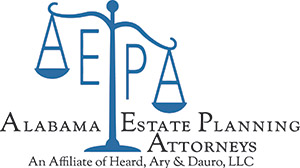Business Succession Planning for Small Business Owners in Alabama
Serving Clients in Huntsville and the Surrounding Area
It would be an understatement to say that family businesses are the backbone of the American economy. Some 90 percent of all businesses in this country are either family-owned or family-controlled. They come in all shapes, sizes and colors, representing all sectors of our economy. From agriculture to services, technology and manufacturing, family businesses generate an estimated one-half of the U.S. GNP and pay half of all wages earned in this country.
Not all family businesses are traditional small businesses either. Family businesses comprise of roughly one-third of all businesses included in the Fortune 500, but not all of the family business statistics are rosy.
Family Business Owners and Estate Planning for the Family
The family element in every family business can mean the difference between its success or failure during the transfer process. The retirement, disability or death of the business owner are all common events that can trigger a business transfer. Tough questions must be asked and answered, such as:
- Who will run the business after you? Will it be your spouse, one of your children or a non-family member key employee?
- Will your spouse still be financially dependent on it, or have you made arrangements to ensure they are financially independent of the business?
- What arrangements have you made for the inheritance of your children who are not active in the business?
- Have you in-law proofed your estate?
- Will estate taxes affect your business?
- Have you coordinated your financial, business and estate plans?
- Do you have a business buy-sell agreement in place, and know how to fund it?
Asset Protection for Professionals and Business Owners
Asset protection planning involves making prudent decisions today to protect yourself, your business, and your hard-earned assets from loss due to lawsuits, creditors or bankruptcies. Asset protection planning is especially prudent for professionals and business owners, whose personal assets could be at risk due the nature of their employment.
Statistically and anecdotally, we all know that the number of divorces, lawsuits and bankruptcies is staggering. To protect your assets from these and other disasters, proper risk management strategies should be given careful consideration. These strategies include exempting your assets from the claims of creditors, limiting your liability through legal entities, and transferring your risk through insurance.
An Essential Part of Smart Planning
Asset protection is an essential part of every smart estate plan. We find honest ways to protect our clients’ homes, loved ones, values, and independence, to help ensure our clients never run out of money and never run out of options.
Exempting Assets
State and federal laws exempt some of your assets from the claims of creditors. Important to note is that while some states allow you to choose either the state or federal exemptions, in others you must use the state exemptions … and federal bankruptcy exemptions are not available.
Once you have identified the protected asset classes available to you under applicable law, it may be prudent to maximize your protection by converting non-exempt assets into exempt assets.
Limiting Liability for Professionals & Business Owners
Many entrepreneurs operate their businesses as sole proprietors rather than through a legal entity, such as a Corporation or a Limited Liability Company. Whether their business is home-based or in the Fortune 500, these business owners are attracted by the informality of sole proprietorship. They also do not want to incur legal fees to create and maintain a legal entity. However, in addition to other advantages, conducting business through a legal entity may offer substantial risk management benefits.
While lawsuits brought against a sole proprietorship are really lawsuits against the owner’s personal assets, lawsuits against a properly created and maintained legal entity are really lawsuits against the entity’s assets. Nevertheless, the selection of an appropriate legal entity is critical for managing your risk.
Transferring Risk with Insurance
When was the last time you reviewed the details of your liability insurance program with your insurance professionals? Are your policies current? Are the coverage limits adequate and are the deductibles reasonable? Have you scrutinized the policies for loopholes? The fundamental philosophy of any insurance coverage is to pay a premium you can afford to transfer a risk you cannot afford. During your asset protection planning, take time to understand both the risks you have retained and the risks you have transferred.
More information on protecting your business assets can be found here.
